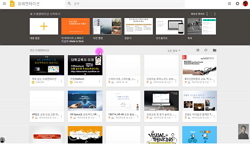This paper aims at providing a framework for evaluating point of view from the standpoint of creative writing theory, and at analysing works using this framework. Reading works by a critical method based on creative writing theory is a reading includi...
http://chineseinput.net/에서 pinyin(병음)방식으로 중국어를 변환할 수 있습니다.
변환된 중국어를 복사하여 사용하시면 됩니다.
- 中文 을 입력하시려면 zhongwen을 입력하시고 space를누르시면됩니다.
- 北京 을 입력하시려면 beijing을 입력하시고 space를 누르시면 됩니다.

창작 소설의 평가 기준 연구 -시점 활용을 중심으로- = A Study on the Critical Methods of Creative Writing Theories -Focused on Point of View-
한글로보기https://www.riss.kr/link?id=A106589352
- 저자
- 발행기관
- 학술지명
- 권호사항
-
발행연도
2009
-
작성언어
-
-
주제어
소설창작 ; 시점 활용 ; 평가 기준 ; 학습작가 ; 수정하기 ; 김훈의 화장 ; Fiction Writing ; Point of View ; Evaluating Standards ; Student Writer ; Revision ; Kim Hun's Hwajang
-
KDC
800
-
등재정보
KCI등재
-
자료형태
학술저널
- 발행기관 URL
-
수록면
355-379(25쪽)
-
KCI 피인용횟수
8
- 제공처
-
0
상세조회 -
0
다운로드
부가정보
다국어 초록 (Multilingual Abstract)
Reading works by a critical method based on creative writing theory is a reading including both synthetic reading as a reader and analytic reading as a writer. The synthetic evaluating standard is ‘Unity.' And the analytic evaluating standards are ‘preciseness', ‘congruty' and ‘affinity'.
In terms of unity, ‘Is the story told interestingly?' and ‘Is the theme well exposed?' must be investigated. The analaytic evaluating elements of the former can be ‘Is there one point of view at one scene?', 'Are the voices of different narrators or POV characters distinctive?' (preciseness), 'Is there anything described by either the narrator or POV character that can't been seen or felt?', 'Does the voice go well with the narrator or POV character?'(congruity), ' Has the voice of narrator or POV character individuality?’, ' Doesn't the I-narrator focus too much on himself?', 'Is there any unnatural author intrusion in the third person?‘(affinity).
The analytic evaluating elements of the latter can be ‘Was the story well told?’, 'Have the perspectives of different narrators or POV characters quite differentiated?’(precision), 'Is the attitude of the narrator or POV character clearly displayed?'(congruity), 'Are the thinking and feelings of the narrator or POV character naturally changed?'(affinity).
With the framework above, the point of view in “Hwajang(Cremation/Makeup) written by Kim Hun is analysed. This story is interestingly told in a I-narrator viewpoint with two different voices: 'I in reality' describing his wife's body calmly and objectively, and 'I in dreaming' describing a young lady's body introspectively, deliberately and emotionally.
Representing the vanishing body, the former voice stares at 'impossibility of life'. And the latter's voice is eager to 'calling name', showing the yearning and hunger and thirst for vitality. These two voices are paralleled in a counterpoint structure, and synthesized in a introspective style at the climax of the story, revealing effectively the theme 'impossibility of life and unreachable name calling.'
This study can be useful for fiction writing lessons. For student-writers it can be a standard for evaluating and revising their own writing. Furthermore this study may be a step toward developing fiction writing theories.
This paper aims at providing a framework for evaluating point of view from the standpoint of creative writing theory, and at analysing works using this framework.
Reading works by a critical method based on creative writing theory is a reading including both synthetic reading as a reader and analytic reading as a writer. The synthetic evaluating standard is ‘Unity.' And the analytic evaluating standards are ‘preciseness', ‘congruty' and ‘affinity'.
In terms of unity, ‘Is the story told interestingly?' and ‘Is the theme well exposed?' must be investigated. The analaytic evaluating elements of the former can be ‘Is there one point of view at one scene?', 'Are the voices of different narrators or POV characters distinctive?' (preciseness), 'Is there anything described by either the narrator or POV character that can't been seen or felt?', 'Does the voice go well with the narrator or POV character?'(congruity), ' Has the voice of narrator or POV character individuality?’, ' Doesn't the I-narrator focus too much on himself?', 'Is there any unnatural author intrusion in the third person?‘(affinity).
The analytic evaluating elements of the latter can be ‘Was the story well told?’, 'Have the perspectives of different narrators or POV characters quite differentiated?’(precision), 'Is the attitude of the narrator or POV character clearly displayed?'(congruity), 'Are the thinking and feelings of the narrator or POV character naturally changed?'(affinity).
With the framework above, the point of view in “Hwajang(Cremation/Makeup) written by Kim Hun is analysed. This story is interestingly told in a I-narrator viewpoint with two different voices: 'I in reality' describing his wife's body calmly and objectively, and 'I in dreaming' describing a young lady's body introspectively, deliberately and emotionally.
Representing the vanishing body, the former voice stares at 'impossibility of life'. And the latter's voice is eager to 'calling name', showing the yearning and hunger and thirst for vitality. These two voices are paralleled in a counterpoint structure, and synthesized in a introspective style at the climax of the story, revealing effectively the theme 'impossibility of life and unreachable name calling.'
This study can be useful for fiction writing lessons. For student-writers it can be a standard for evaluating and revising their own writing. Furthermore this study may be a step toward developing fiction writing theories.
참고문헌 (Reference)
1 정한숙, "현대소설 창작법" 웅동 2000
2 이호철, "이호철의 소설창작 강의" 정우사 1997
3 조정래, "소설창작, 나와 세계가 만나는 길" 한국문화사 2000
4 이미란, "소설창작 12강" 예림기획 2001
5 현길언, "소설쓰기의 이론과 실제" 한길사 1994
6 전상국, "당신도 소설을 쓸 수 있다" 문학사상사 1991
7 Stein Haugom Olsen, "The structure of literary understanding" Cambridge University Press 1978
8 Alicia Rasley, "The Power of Point of View" Writer's Diges Books 2008
9 Noah Lukeman, "The Plot Thickens: 8 Ways To Bring Fiction To Life" St. Martin's Press 2002
10 James Scott Bell, "Revision & Self-Editing" Writer's Digest Books 2008
1 정한숙, "현대소설 창작법" 웅동 2000
2 이호철, "이호철의 소설창작 강의" 정우사 1997
3 조정래, "소설창작, 나와 세계가 만나는 길" 한국문화사 2000
4 이미란, "소설창작 12강" 예림기획 2001
5 현길언, "소설쓰기의 이론과 실제" 한길사 1994
6 전상국, "당신도 소설을 쓸 수 있다" 문학사상사 1991
7 Stein Haugom Olsen, "The structure of literary understanding" Cambridge University Press 1978
8 Alicia Rasley, "The Power of Point of View" Writer's Diges Books 2008
9 Noah Lukeman, "The Plot Thickens: 8 Ways To Bring Fiction To Life" St. Martin's Press 2002
10 James Scott Bell, "Revision & Self-Editing" Writer's Digest Books 2008
11 James Scott Bell, "Plot & Structure" Writer's Digest Books 2004
12 Elizabeth Lyon, "Manuscript Makeover" Penguin Group 2008
13 Nancy Kress, Characters, "Emotions & Viewpoint" Writer's Digest Books 2005
14 Tom Bailey, "A Short Story Writer's Companion" Oxford University Press 2001
15 김훈, "2004년도 제28회 이상문학상 작품집" 문학사상사 2004
동일학술지(권/호) 다른 논문
-
- 한국문학이론과비평학회
- 김주언
- 2009
- KCI등재
-
현진건 소설에 나타난 근대적 양상 -<빈처> <고향> <정조와 약가> ...등 5편의 소설을 중심으로
- 한국문학이론과비평학회
- 남춘애
- 2009
- KCI등재
-
- 한국문학이론과비평학회
- 권택영
- 2009
- KCI등재
-
박화성 소설연구 -『북국의 여명』에 나타난 성숙의 플롯을 중심으로
- 한국문학이론과비평학회
- 송명희
- 2009
- KCI등재
분석정보
인용정보 인용지수 설명보기
학술지 이력
| 연월일 | 이력구분 | 이력상세 | 등재구분 |
|---|---|---|---|
| 2022 | 평가예정 | 재인증평가 신청대상 (재인증) | |
| 2019-01-01 | 평가 | 등재학술지 유지 (계속평가) |  |
| 2016-01-01 | 평가 | 등재학술지 선정 (계속평가) |  |
| 2015-12-01 | 평가 | 등재후보로 하락 (기타) |  |
| 2011-01-01 | 평가 | 등재학술지 유지 (등재유지) |  |
| 2009-01-01 | 평가 | 등재학술지 유지 (등재유지) |  |
| 2007-01-01 | 평가 | 등재학술지 유지 (등재유지) |  |
| 2004-01-01 | 평가 | 등재학술지 선정 (등재후보2차) |  |
| 2003-01-01 | 평가 | 등재후보 1차 PASS (등재후보1차) |  |
| 2001-07-01 | 평가 | 등재후보학술지 선정 (신규평가) |  |
학술지 인용정보
| 기준연도 | WOS-KCI 통합IF(2년) | KCIF(2년) | KCIF(3년) |
|---|---|---|---|
| 2016 | 0.68 | 0.68 | 0.69 |
| KCIF(4년) | KCIF(5년) | 중심성지수(3년) | 즉시성지수 |
| 0.69 | 0.68 | 1.285 | 0.21 |




 KCI
KCI KISS
KISS



